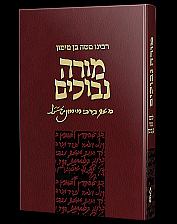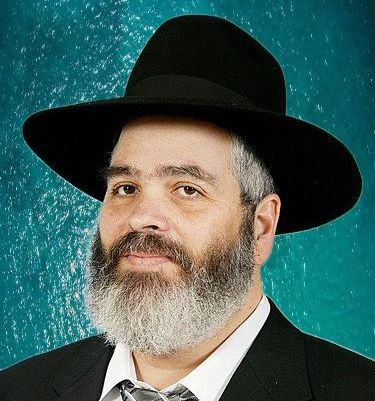  |
|
| |||||
Agudath Israel of America Welcomes Executive Orders
Agudath Israel of America welcomed President Donald Trump's decisive action to address the alarming rise of antisemitism on college campuses and in public spaces across the country. The executive order titled "Additional Measures to Combat Antisemitism", aims to protect Jewish students and ensure that universities uphold their legal responsibility to provide a safe learning environment.
I once heard in the name of HaRav Yisroel Yaakov Lubchansky who was Mashgiach by HaRav Elchonon Wassermann and asked the following question: After Yosef interpreted Pharaoh's dreams, he said to Pharaoh: 'And now, let the king seek a wise and intelligent man and appoint him over the land of Egypt.'
Why was it necessary to find an 'intelligent' man? The need was for a capable administrator to divide Egypt into many sectors, to determine the amount of produce needed in each one and appoint people to execute the job. All that was needed was a good manager, but why must he be navon? What is the connection?
Do you think the law reigns in the State of Israel? The judges are rolling in laughter. They are the law supreme, excluding everything else.
So here goes: The law passed in the Knesset regarding the selection of judges has two important clauses. The first: The committee for selecting judges is supposed to be summoned by the Justice Minister. The second: Said committee is supposed to be comprised of nine members and in any case, seven of the nine are to be present for a quorum.
This is the text of the law by which the country is expected to be run. This tallies with the law of separation of legislation and justice which determines that the Knesset is the legislative body while the court is meant to operate thereby.
This appreciation of the Ozharover Rebbe was originally published in 1996, 29 years ago.
Part 2
"I toiled in order to demonstrate that every single Jew is capable of realizing his true potential in Torah [study]. That despite the plagues afflicting this generation — the deep spiritual darkness, the utter confusion wrought by false ideologies, the intellectual obtuseness — it is still possible to see light and to walk in the path of righteousness" (Excerpt from R. Moshe Yechiel Epstein's introduction to Be'er Moshe on Devorim).
*
R. Moshe Yechiel (Halevi) Epstein — known simply as "the Ozharover" — was born in 1890 in Ozharov, a small shtetl in Central Poland. He was the fifth heir to the Ozharover chassidic dynasty, which had originally been founded by Rabbi Yehuda Arye Leib (Halevi) Epstein, a disciple of the Chozeh MiLublin.
By the time of his death in Tel Aviv on 1 Shvat, 5731 (1971), the Ozharover became a renowned Torah luminary who provided spiritual guidance to large numbers of Jews in Poland, the U.S., and Israel. He also made two important contributions to Torah literature: The Aish Das, a 7,000 page encyclopedic synthesis of Torah ideology and chassidic lore, and the Be'er Moshe, a 5,000 page commentary on the Pentateuch and early Prophets (reprinted by Rabbi Tanchum Becker, the present Ozharover Rebbe).
Nowadays, many people refer to the Ozharover as "the Aish Das." Perhaps this is an indicator of the tremendous impact his classic sefer had on the Torah community. Even so, those who merited to come into personal contact with the Ozharover glimpsed a saintly tzaddik whose gadlus extended far beyond his literary accomplishments. Indeed, to focus exclusively on the Ozharover's written works would only be telling half his story — literally — since he only began committing his thoughts to writing halfway through his lifetime, when he was 40 years old.
In order to gain a deeper appreciation of who R' Moshe Yechiel Epstein really was, we must learn more about his personal experiences: the challenges he faced, the trials he experienced, the manner in which he expressed his profound love for his fellow Jews.
As the Ozharover himself wrote in his introduction to Aish Das, "I named the book Aish Das (lit., "Fire of Religion") because it is founded upon [my] three `burning loves' — love for Hashem, love for Torah, and love for one's fellow Jews." These three "burning loves" glowed within his heart since youth, and flared increasingly brighter with each passing year. His story crowds the throat with emotion and inspires us to reach ever higher in our avodas Hashem.
Rain and Kinneret Watch by Dei'ah Vedibur
Staff
Our weekly report of the rain and the level of the Kineret -
Winter, 5785.
This Google Custom Search looks only
in this website.
Outstanding Articles From Our Archives
IN-DEPTH FEATURES
Introduction: A Vision of Slobodke
HaRav Meir Chodosh, one of the central figures in the yeshiva world in Eretz Yisroel for over half a century, was widely venerated as the senior mashgiach of the generation. A close disciple of the Alter of Slobodke, HaRav Chodosh, embodied the classic Slobodke approach to the study of Torah and of mussar, to character development and to life. He placed the imprint of the tradition which he faithfully transmitted upon the thousands of talmidim who grew and matured over the years in the Chevron Yeshiva and indirectly, upon the even larger numbers in the yeshivos that were founded by his family members and disciples.
To say that HaRav Chodosh was an embodiment of the Slobodke approach may seem to be an oversimplification. No system can be transplanted to a different country, to different times and to different generations and still be applied precisely as before; there has to be adaptation and modification. Yet, inasmuch as the Alter of Slobodke had expounded the fundamentals of his vision of man's innate greatness and the way in which man might realize his full spiritual potential, applying it to the yeshiva world of his day in prewar Eastern Europe, HaRav Chodosh did the same in the nascent yeshiva world of Eretz Yisroel after the war. Though many of the external manifestations of the Alter's approach were the same as the Alter himself employed, the element of innovation lay in the application of the underlying concepts to what was and is, for all intents and purposes, a new world.
Commenting on two seemingly contradictory ma'amorei Chazal about Rabbi Eliezer, one which says that Rabbi Eliezer would say innovative teachings that had never been heard before, while in the other, Rabbi Eliezer himself attested that he never said anything that he had not heard from his teachers, HaRav Chaim Shmuelevitz zt'l, explained that a true talmid is not someone who simply repeats what he has been taught, but someone who can say what his rebbe would have said about a certain topic. If he has assimilated his rebbe's teachings to the extent that he can work out how his rebbe would have approached a matter, he is a true talmid. He may say new things, but he draws them all from his rebbe. Even as an elderly man, when Rav Chodosh began a shmuess with the words, "Ehr flegt zogen, (He used to say)," he was referring to the Alter, whose image and inspiration never left him.
Opinion & Comment
Many are the different titles and names by which the Torah is referred to throughout the verses of Tanach and as commented upon by Chazal. They explain that each name comes to illuminate a different aspect of Torah, a unique attribute incorporated within the Torah, even though some titles may even seem exclusive or self-contradictory. The Torah is likened to water, as well as to fire, to wine and to milk, and also to bread.
To be sure, there is no contradiction at all, only an exposition of a different one of the myriad facets of Torah and the ways which it affects those who delve into it. All are included, in dynamics and in potential, overtly and covertly, and each, in turn, as the need arises, comes to the fore to affect the necessary impact of current need.
One reason behind this multifaceted nature is that all the souls of Jewry, throughout all the generations, are included and represented within the Torah. Torah is revealed to each and every one according to his level, merit, goal and mission in life.
Just as there are a multitude of names and a multitude of effects of Torah upon those who apply themselves to its study, disclosed respectively according to the need of the hour and the season, so is there a range among those who teach and transmit Torah in every generation. Each person exhibits a different nuance of Torah, revealed and expressed somewhat differently than by his colleague, even among the disciples of the very same master, the godol who nurtures them spiritually in his particular way, while they absorb the rest of the Torah in a latent, not so active, manner, all the same.
Every great Torah scholar derives his individual strength and power in Torah from what he ingests and toils over, though it emerges to the fore with his particular variance of emphasis and expression; he illuminates a certain aspect or shade and reflects it in his unique manner. And when he disseminates his Torah strength and sheds the light of Torah upon his surroundings, disciples and all of his generation, it highlights a special, specific aspect of the Torah light which he produces because of his particular fortes.
"A Wall" -- This Refers to Torah
|
|||||




.jpg)



